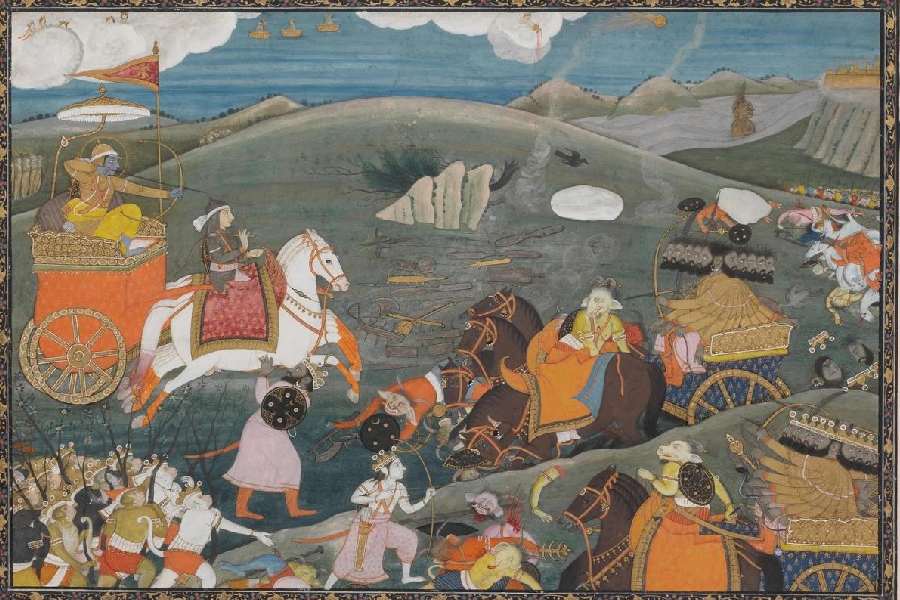Book: THE MEMOIRS OF VALMIKI RAO
Author: Lindsay Pereira
Publication: Vintage
Price: Rs 599
A line of Orwellian enquiry informs us that myths that are believed in become true. Corollarily, every truth that is eroded through disbelief becomes a myth. Lindsay Pereira argues that the memory of the 1993 Bombay riots has been scrubbed off its relevance and its ruminative agency because its ramifications continue unabated, shrouded in despotic dubiety. On this note, mythologising the contemporary and contemporising mythology both become inherently arduous ordeals. This is because the process of translation from one realm to the other risks sacrificing something at the altar of adherence. Books by Aashish Kaul, Bhanumathi Narasimhan, Amish Tripathi, Kavita Kané, Vayu Naidu, Anand Neelakantan and Chitra Banerjee Divakaruni, to name a few, treat the Ramayana as the commingling of a million teeny narrative fibres, vulnerable to utilitarian usurpation, and crucial to this postmodern culture of accommodation, if not aggrandisement, of our myths. Pereira’s second book, The Memoirs of Valmiki Rao, is a work of luminous artistry that accomplishes both and furthers the essence of the novel as a set of epistolary notes between the times having a showdown.
It is a retelling of the Ramayana, that great Indian epic, anointed with sandalwood paste in several Hindu households. Pereira dispels its embellished piety by staging his recital in the fiercely political setup of Bombay-on-the-ball: the demolition of the Babri masjid and the ensuing riots, bringing out the inchoate savagery that tints and taints it. His masterly rendering drives the notion of moral ambiguity and the commandments of loyalty. Ramu — stoic, unsullied — is wheedled into the RSS. The appropriation of Ramu’s image to burnish the image of the religio-political group among sceptical crowds is a quaint parallel to the appropriation of Lord Ram for similar purposes. According to Anand Patwardhan (in his documentary, Ram Ke Naam), among others, the destruction of the Babri masjid coincides with a religious foment that was bellowed, at least partially, by the late 1980s Ramayana, heralding the radical imagery of a tangible diorama and conjuring cultural institutions for a people to repose their anxieties in. At many points, Valmiki states that the memoir is an attempt to contain the rapidly unspooling film of his mental faculties. As the book chronicles audacious replications of the epic, the germ of performativity and cinematic verbiage is apparent. Valmiki attributes this to the films people watch. In Bombay, as in India, the spectacle is the truth and memory is fungible, periodically reconstructed through audio-visual bombardment on news channels and our films.
The central pleasure of reading this tragedy is registering when it snugly fits the epic, like a woodwork jigsaw engraved in the palimpsest of the original. A.K. Ramanujan’s essay, “Three Hundred Ramayanas”, demonstrates how its hundreds of versions reinterpret its characters to suit ideological, rational, emotional or ethical constructs, gesturing at the diffuse nature of the epic. Pereira’s book champions this digressive, discursive slant. It is divided into seven chapters, mirroring Valmiki’s seven kandas, and has amusing analogues — Ramu (for Lord Ram), Lakhya (for Lakshman), their father, Vishnu, and Janaki (for Sita). Stationed in a set of Bombay chawls, themselves remnants of coloniality, the riots re-enact the war in Lanka, which is compellingly sketched out as a similar, but competing, antagonistic set of chawls. Ravan is an underworld don, of course. There is also a chaiwallah; he is a stand-in for the hero of the Sundarkand, Hanuman.
Combined with the episodic progression of the retelling, one is awed by the startling brilliance of this storytelling schema. Pereira’s book is a meditation on the mutability of memory as he brings out oft-ignored vices of the Ur-epic and weaves the present in considered wefts on the scaffolding of an unsettling place in time. It is at once contemporary and timeless, a fable of supreme feasibility and a monument to the fallibility of man, luxuriating in the blinding sun of our dastardly home truths.











